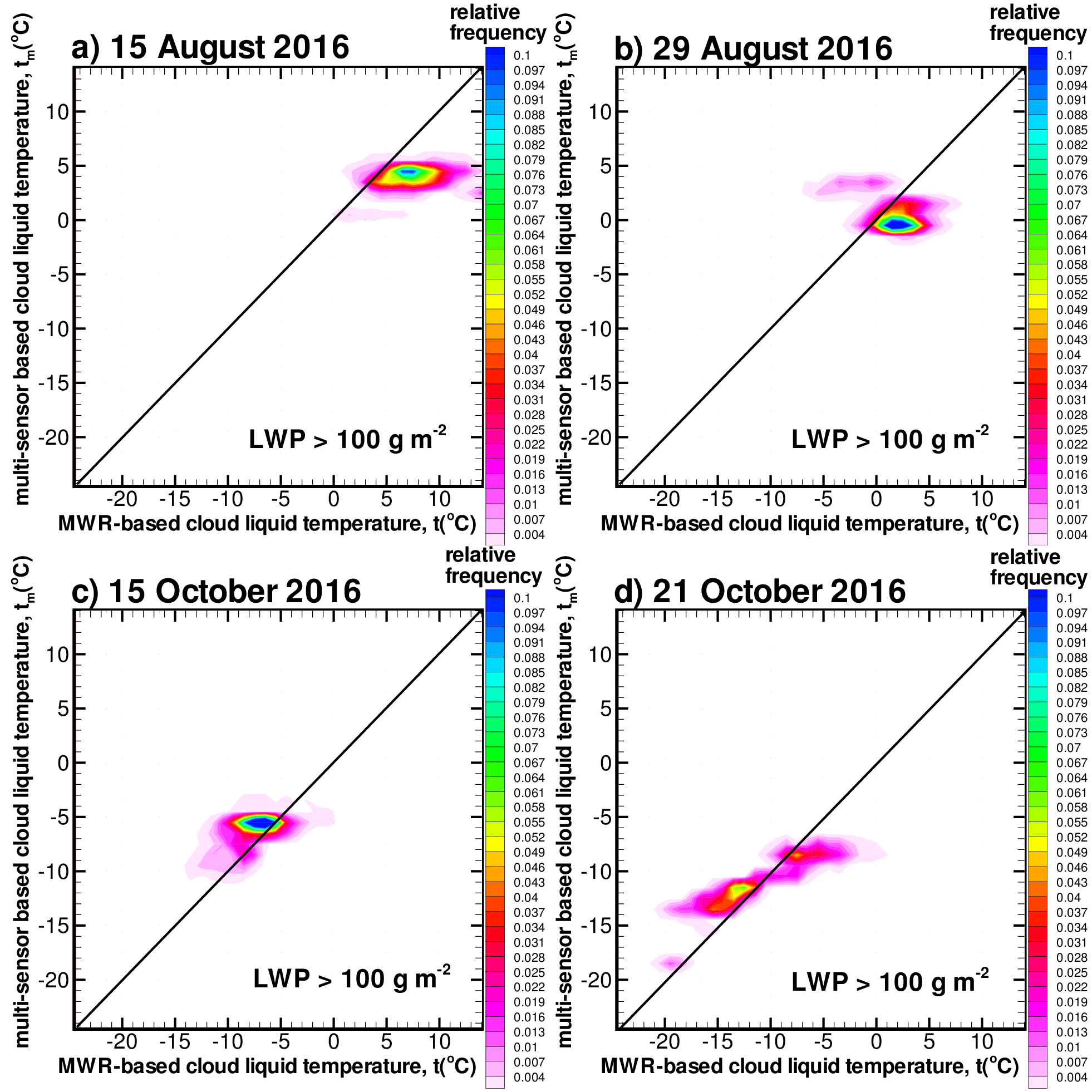Retrieving liquid cloud temperature from three-channel microwave radiometer measurements
Submitter:
Matrosov, Sergey — University of Colorado
de Boer, Gijs — University of Colorado Boulder
Area of research:
Cloud Processes
Journal Reference:
Science
While microwave radiometers have been long used for retrievals of total amount of the cloud liquid water path (LWP) and the integrated water vapor (IWV), estimates of cloud liquid temperature have traditionally required the knowledge of cloud boundaries, which are usually obtained from active remote sensors (e.g., lidars, radars), and vertical profiles of temperature. A novel remote-sensing method has been developed to infer the mean temperature of cloud liquid water solely from passive radiometer measurements at frequencies around 22, 30 (Ka-band), and 90 (W-band) GHz and standard data on near-surface air temperature and pressure. The method is based on the strong temperature dependence of cloud optical thicknesses at Ka and W frequency bands.
Impact
The ability to infer mean liquid cloud temperature from ground-based passive measurements increases the utility of microwave radiometer measurements to provide important information on cloud properties. Radiometer-based retrievals of cloud temperature are especially valuable when active sensor estimates of cloud boundaries are not available or are compromised by the presence of the ice hydrometeors (e.g., mixed-phase clouds). Such retrievals have direct relevance for assessing aircraft icing conditions as they not only detect the presence of supercooled liquid layers but also can place these layers at the right heights in the vertical atmospheric column when the temperature profiles are known from model predictions or radiosonde soundings. The suggested method is tailored to the ARM three-channel radiometers and can be applied for measurements at different ARM sites.
Summary
The new method to retrieve mean cloud liquid temperature from standard ARM ground-based, three-channel, microwave radiometer measurements was developed and tested. This method is based on estimates of the ratio of liquid cloud optical thicknesses at W and Ka frequency bands, which is a strong and unique function of cloud temperature. The liquid cloud optical thicknesses are obtained by subtracting the water vapor and dry atmosphere components from the total optical thicknesses, which are calculated from measured brightness temperatures. The method was tested using measurements at the third ARM Mobile Facility at Oliktok Point, Alaska. Three-channel (i.e., 23.8, 31.4, and 90 GHz) microwave-radiometer-based retrievals of the mean cloud liquid temperature retrievals were compared to temperature estimates from multi-sensor measurements including laser ceilometer and interpolated radiosonde soundings. The intercomparisons conducted for different cloud types (i.e., liquid water and mixed-phase clouds) indicated a good agreement between radiometer-based and multi-sensor temperature retrievals for clouds with LWP greater than about 50 g m-2. The corresponding typical standard deviations were around 3 degrees C.


